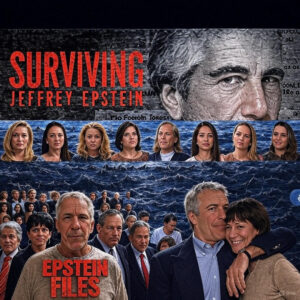
The opening shot isn’t glamor — it’s grief. A trembling voice, a photograph, a truth that money couldn’t bury any longer. Within minutes, you realize this isn’t a story Netflix wants you to binge — it’s one you’ll struggle to breathe through. The new documentary tearing across screens worldwide doesn’t chase ratings; it exposes a reckoning. Every testimony cuts deeper, every name unveiled feels heavier. This isn’t scripted outrage — it’s justice finally finding a signal. The powerful who once dictated headlines are now running from them, and the audience they ignored has become their jury. By the time the credits roll, you won’t be asking if it’s true — you’ll be asking how it stayed hidden for so long.
Netflix didn’t just expose secrets — it broadcasted accountability. What began as an investigation now unfolds like a mirror, reflecting every institution that chose silence over integrity. Hidden files. Recorded confessions. Patterns repeating across industries like echoes in a hollowed system. Each revelation feels less like discovery and more like confirmation of what too many already suspected — that truth doesn’t die, it just waits for someone brave enough to press “play.”
The brilliance of this documentary lies not in shock value, but in its restraint. There’s no sensational editing, no manipulative score. Just facts, faces, and the weight of what they’ve endured. The camera lingers where most narratives would cut — on the pauses between words, on the eyes that refuse to look away. Those moments tell a story that no script could capture: the cost of truth, and the courage it demands.
For years, silence was currency. Corporations traded it, reputations depended on it, and victims were coerced into it. But streaming changes everything. What was once confined to courtrooms or whispered in safe spaces now reverberates across millions of living rooms. Netflix doesn’t just release a documentary — it stages a global trial, one view at a time. And as each episode trends, denial becomes impossible. The lens becomes the witness.
There’s something transformative in that. Viewers who might have scrolled past headlines are now confronted with faces, with evidence, with humanity. The story isn’t abstract anymore — it’s visceral. And as the truth unfolds, so does a quiet realization: complicity wears many forms. Some protected predators. Others protected their comfort. Both enabled the same silence.
By the end, there’s no applause, no satisfaction — just reflection. The documentary doesn’t end with closure; it leaves you with accountability. Because justice, like truth, isn’t neat. It’s relentless. It demands that we not only see, but also remember.
So when the screen fades to black, you’re left with the echo of a question that refuses to fade:
What else is still being buried — and who’s finally brave enough to uncover it?
Leave a Reply